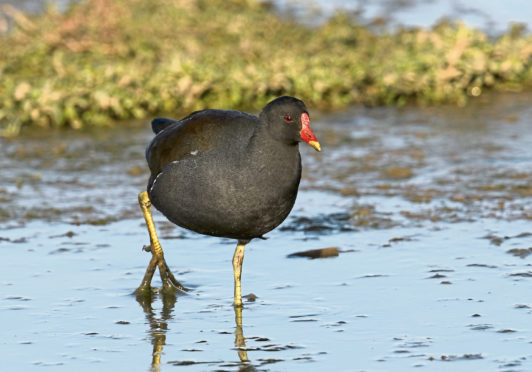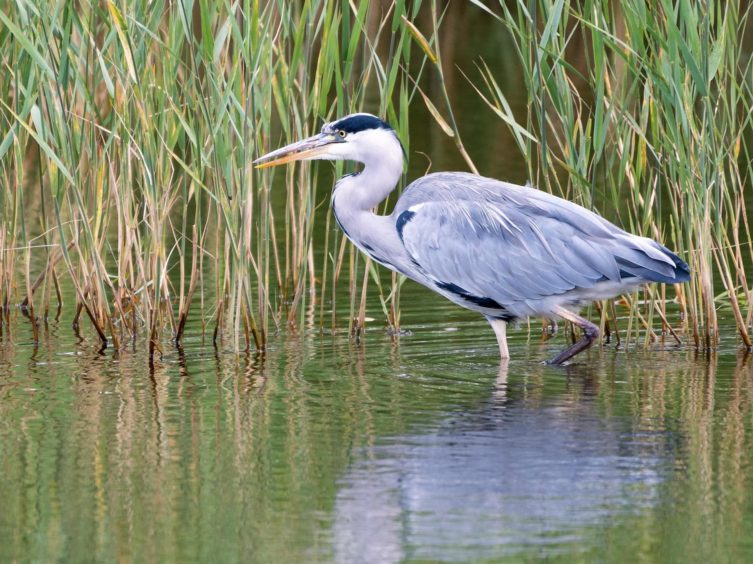Parks are wonderful for nature and no more so than North Inch in Perth, where a wild pond fringing one of the golf fairways caught my eye.
The water spilled with wildlife, including a moorhen dabbling in the shallows. When brought into focus with my binoculars, the moorhen’s wonderful vermillion bill, tipped with yellow, sparkled in the weak winter sunshine.
Moorhens have broad tastes, splashing around in the shallows for water plants, grasses, insects, worms, and small fish. This one had just snaffled a large snail from the bottom of the pond, and as it grappled with it, I wondered how its relatively short bill would be able to extract the juicy flesh from within.
Moorhens are gangly birds, long-legged and with large, flanged feet, which are perfect for providing support on soft mud and floating vegetation, as well as for swimming. They are perky creatures, constantly flicking their white-edged tails as if in nervous agitation.
On the far side of the pond, a grey heron sat hunched in amongst the tangled rushes and reeds, resting and keeping half-an-eye on the nearby walkers and cyclists.
Although this bird was on its lonesome, herons occasionally rest in groups, and I described such an encounter in my new book on a Scottish river wildlife year, ‘If Rivers Could Sing’, published by Tippermuir Books.
I wrote: “Herons always have the capacity to surprise, and on one January afternoon in a stubble field adjacent to the lower river, I stumbled upon a gathering of 11 birds resting up. This was a communal roost, and a sight I had only previously witnessed on a handful of occasions. There was no interaction at all between the herons as they gently slumbered, but I imagine they gained comfort by being together with their own kind.”
Herons are mystical birds, and they have a distinct air of the primeval, especially when watching one take flight on a mist-laden morning, which imprints upon the consciousness surreal imagery of a pterodactyl disappearing into the grey wispy murk.
Thoughts by a river
After a while lingering by this Perth pond, I followed the track by the banks of the Tay heading north towards Luncarty. The river here is powerful, but there was a softer side too, including a group of greylag geese that bobbed about on the water on the far side.
As I gazed across the tumbling flow, I reflected upon how rivers are the wild beating heart of our environment, arteries of shimmering life that wind through the landscape.
Rivers are serene places where wildlife abounds at every turn, with the rush of water helping to relax the mind and lift the spirits. Here, standing by the banks of the Tay, such calming influences swept across my soul in a most wonderful way.
Did you know
Whilst herons eat mainly fish, frogs form an important part of the diet in the spring. They may also occasionally take mice, voles, and large insects such as dragonflies.











